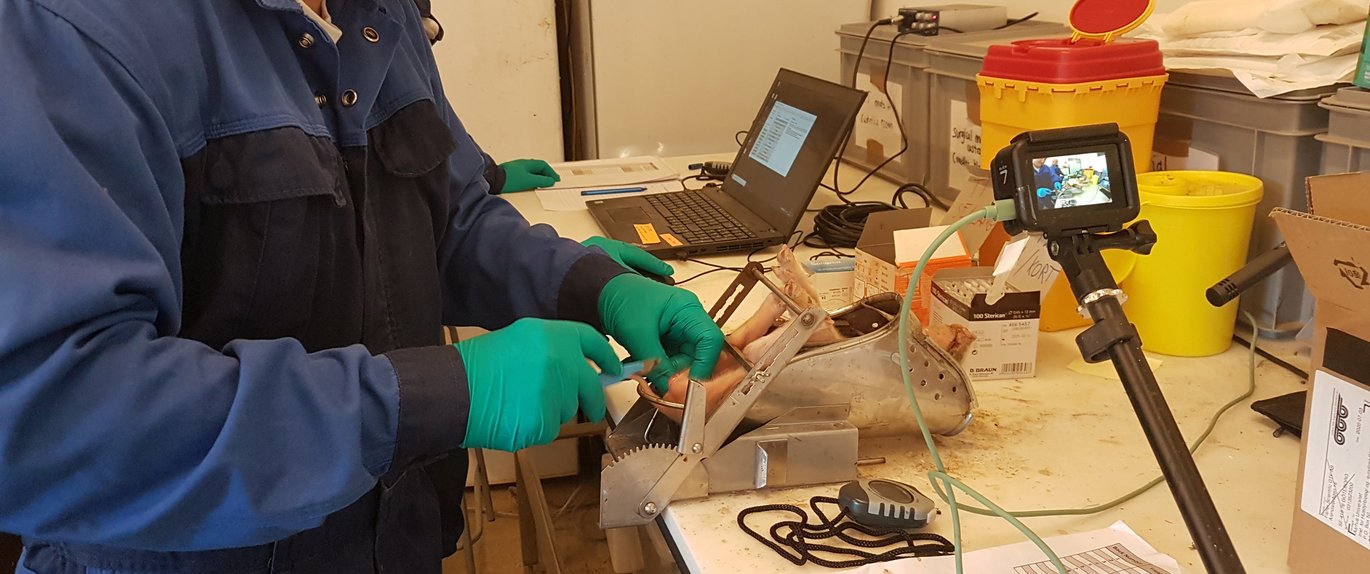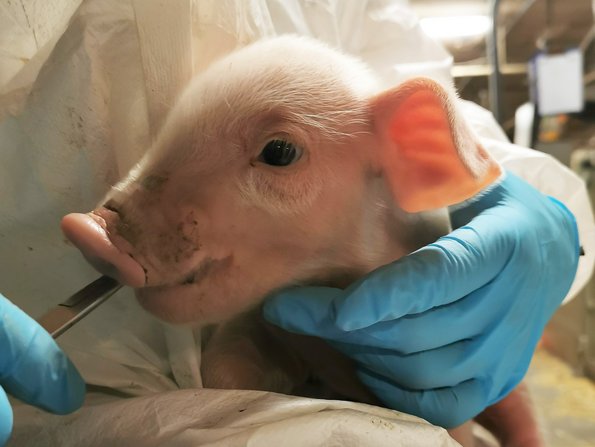New knowledge about local anesthesia of piglets at castration
Based on large scale studies using novel methods of recording pain and stress in young piglets, researchers at Aarhus University (AU) have obtained new knowledge on how to handle local anesthesia of piglets at castration.

ANIVET researchers have, for years, been involved in studies investigating different management procedures, including bodily mutilations, that take place in animal production. One example is castration of piglets, which is done on almost all male piglets in the first days of life to prevent the later development of so-called boar taint – an aversive odor/taste associated with meat from some male pigs.
In Denmark, it is a legal requirement that piglets are given analgesia at castration. In addition, since 2019, Danish pig farmers have been allowed to administer local anesthesia themselves (normally this is a procedure that requires veterinary expertise), and – as part of an industry standard – this is now practice on almost all Danish male piglets.
However, there are only two drugs that are allowed for use for local anesthesia of piglets on the Danish market (both based on procaine), the efficacy of which has only been documented to a limited extent. In addition, it is not known which injection method fits best to a situation where it is done by farmers in many piglets at the same time during a busy farm day.
During the last few weeks, two scientific papers seeking knowledge about this topic were published:
https://www.frontiersin.org/articles/10.3389/fvets.2022.1009858/full
https://www.ncbi.nlm.nih.gov/pmc/articles/PMC9395716/
Recommendations for castration
The main conclusions of the papers are that injecting the local anesthetic in the center of the testis is preferable as compared to the current method of injection aiming to reach the spermatic cord, and that injecting a volume of 0.5 mL of drug per testis leads to better efficacy at castration as compared to 0.3 mL of drug. In addition, a time interval of 5 to 10 min between injection and castration should be respected.
The use of local anesthetic alleviate pain, but….
Nevertheless, even when this method is applied, injection of the drug is painful, and piglets still show signs of pain and stress at castration, despite the use of local anesthesia. These results were obtained based on large scale studies performed on a Danish commercial farm, using novel methods of recording pain and stress in young piglets, including detailed analysis of the vocalizations, leg resistance movements and concentration of stress hormone in the saliva.


The first author of the papers, Mathilde Coutant, who will soon finish her PhD education at Department of Animal and Veterinary Sciences (ANIVET), Aarhus University says: “Developing these methods were among the most exciting phase of the project and allowed us to document piglets’ responses to the procedures in a more accurate way than most studies have been able to”.
According to M. Coutant, ”The results highlight the need for pain mitigation procedures that are less painful to administer and more efficient at castration. If such methods cannot be developed, alternatives to castration of piglets should be considered”’.
Additional information
| We strive to ensure that all our articles live up to the Danish universities' principles for good research communication. Because of this the article will be supplemented with the following information: | |
Funding | The studies have been performed as part of the "Framework agreement on research-based authority service" concluded between the Ministry of Food, Agriculture and Fisheries and Aarhus University under ID no. 21-H2-06 "Performance agreement Livestock production 2019-2022". |
| Experiments and data collection were led and carried out by Aarhus University in a Danish private herd. |
Read more | Two scientific papers about this topic were published: https://www.frontiersin.org/articles/10.3389/fvets.2022.1009858/full https://www.ncbi.nlm.nih.gov/pmc/articles/PMC9395716/ Link to a DCA-report (in Danish): https://pure.au.dk/portal/files/257366723/Kastrationsrapport_revideret_270222.pdf |
Contact | PhD student Mathilde Coutant |
